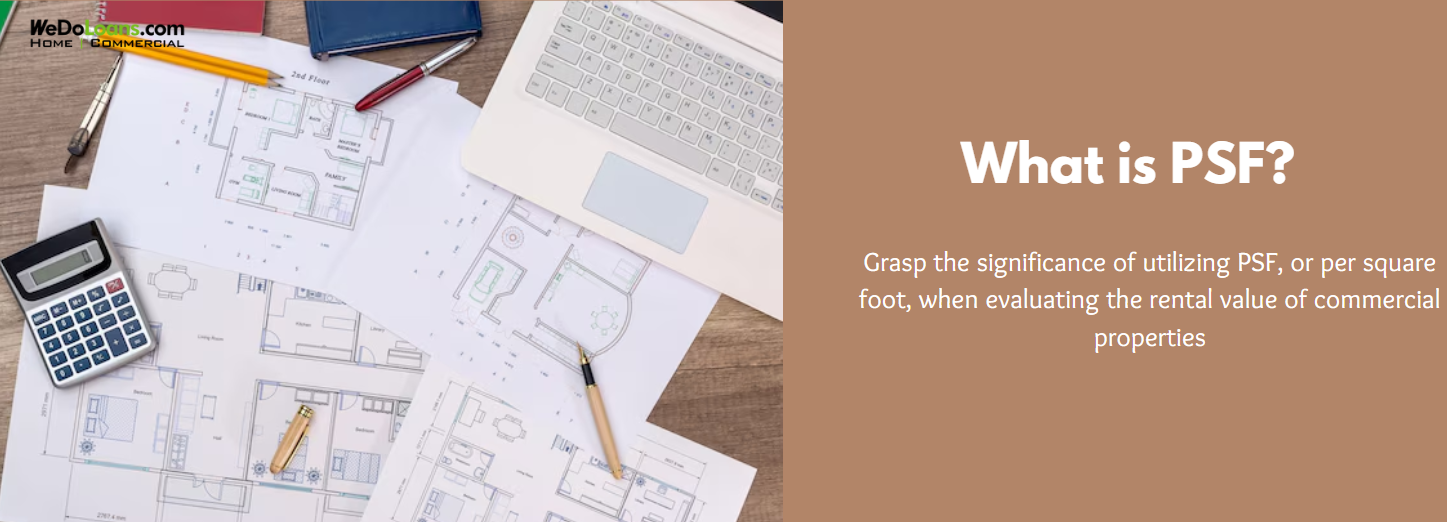 In the context of commercial real estate, PSF, or per square foot, is a critical concept to grasp when buying, leasing, or managing properties. It is a standard method used to calculate the rental value of real estate and to communicate the size and scope of a property in transactions. Understanding PSF and the local area’s rates is crucial for making informed business decisions.
In the context of commercial real estate, PSF, or per square foot, is a critical concept to grasp when buying, leasing, or managing properties. It is a standard method used to calculate the rental value of real estate and to communicate the size and scope of a property in transactions. Understanding PSF and the local area’s rates is crucial for making informed business decisions.
PSF in Commercial Real Estate
Unlike residential leases, the cost of renting commercial space is not determined by the number of units but by the amount of square footage. In commercial real estate, rent is calculated based on the “per square foot” (PSF) of space. For instance, a lease rate of $20 PSF means the tenant will pay $20 per square foot annually.
For example, if a tenant agrees to pay $20 PSF for a 1,000-square-foot property, the total annual rent will be $20,000. Typically, these payments are divided into monthly installments.
PSF Differences in Gross Leases and Net Leases
When considering lease agreements, understanding the difference between gross and net leases is essential, as it can impact overall costs.
In a net lease, commonly known as an NNN (triple net) lease, the tenant is responsible for paying base rent plus additional costs, such as property taxes, insurance, and maintenance fees. These costs can significantly increase the total rent over time.
On the other hand, a gross lease consolidates all expenses into a single rent payment, with the landlord covering additional costs like taxes and maintenance. Gross leases are more common in residential settings but can also apply to some commercial properties.
Average Asking Rent Per Square Foot
The cost of rent per square foot varies widely depending on location and the type of property. Across the United States, PSF rates typically range from $8 to $23. In areas with high demand and limited supply, such as major metropolitan centers, the PSF can be significantly higher. Conversely, in regions with less demand or more available space, PSF rates tend to be lower.
For example, office space in New York City is likely to have a much higher PSF compared to similar spaces in Detroit or Cleveland. Additionally, industrial properties may have a lower PSF than office spaces, though this varies by location and the specific needs of the property.
How to Calculate PSF in Commercial Real Estate
PSF calculations are based on the price per square foot of space. For example, if a property has a PSF of $15 and is 2,000 square feet, the annual rent would be $30,000. This is calculated by multiplying the PSF rate by the number of square feet (15 x 2000 = 30,000).
The annual rent is typically broken down into monthly payments. In this case, $30,000 divided by 12 months would result in a monthly rent of $2,500. Additional costs, such as taxes, may not always be included.
Benefits of Using PSF in Commercial Real Estate
PSF is a valuable tool in commercial real estate because it provides a standardized way to compare different properties. Investors and tenants can use this figure to evaluate rental rates and property features, allowing for a more straightforward comparison across various locations. It also helps businesses and property owners assess the value of a rental opportunity based on available space.
Conclusion
In commercial real estate, PSF is a key metric for determining rental costs based on the size of the property. It offers a simple, effective way to compare properties and make informed decisions about leasing or investing in commercial spaces.
